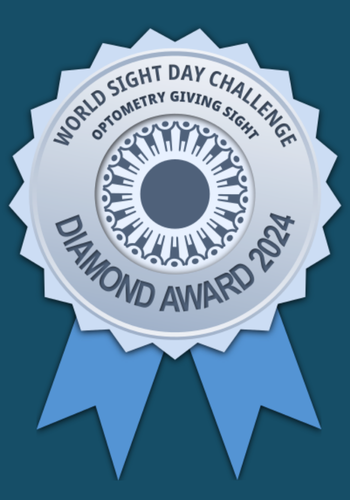EYE INFECTIONS
Eye infections are the result of micro-organisms (bacteria, virus or fungus) invading the space in and around the eye. Depending on the location of the infection (lid, conjunctiva to or cornea) and the type of micro-organism infecting the area, there can be many different types of treatment. It is therefore very important to see your local optometrist or eye care specialist if you suspect you may have an infection, this will allow for proper treatment and not delay healing.
Common types of infection
Conjunctivitis
Conjunctivitis is a very common infection often referred to as “pink eye”. It can be contagious and easily spread amongst children but can also affect adults. It can be either bacterial or viral. Symptoms are red, sore eyes, swollen lids and or conjunctiva with mucous discharge. Bacterial infections are treated with an antibiotic eye drop. Viral infections will typically clear up on their own over the course of a few weeks. Because of the contagious nature of these infections it is important to maintain good hygiene if you suspect you have an infection, washing hands often, having your own towel/ pillowcase, not sharing contact lenses or cases. Vision is not normally affected with these infections.
Infected Eyelids
A hordeolum, often referred to as a “stye” is a bacterial infection in the small oil glands within the upper and lower eyelid. Depending on the degree of infection there may be localized swelling, redness/soreness or it may spread throughout the entire lid. Vision is typically not affected unless the swelling causes the lid to droop and block vision or the bump puts pressure on the cornea causing a distortion to the vision. Treatment is often just heat and gentle massage multiple times a day until it is able to drain on its own. Both antibiotic eye drops and oral antibiotics are may be used in the treatment. Proper lid hygiene can help reduce the recurrence of these infections (daily lid cleaning).
Blepharitis is another common lid infection that can lead to lid inflammation and may be the cause of some recurrent Styes. This can be caused by bacterial or parasitic infections along the lid’s lash line. Common symptoms are red inflamed eye lids, crusty material along the base of the lashes, itchy lids and foreign body sensation (Feeling that there is something stuck in the eye). Treatment would be lid scrubs or mechanical debridement depending on degree of build-up on lid margin, antibacterial and or anti-inflammatory eye drops. Vision may or may not be affected depending on how inflamed and irritated the cornea is from the debris. This is often a chronic problem therefore it is important to maintain good lid hygiene even after treatment is done.
Viral – Herpetic infections
Both the herpes simples and zoster virus can cause serious sight threatening vision loss. It is very important to treat these and monitor very carefully, surface infections can be treated and resolve without complication but deeper corneal infection can cause corneal scarring and vision loss. These are often very painful infections, patient will have red sore eyes, may be light sensitive, experience watery eyes and no mucus discharge. Treatment is with an oral antiviral and topical antiviral eye drop if available and late stage treatment may involve a steroid eye drop to prevent scarring. The virus is dormant in a person’s body and outbreaks can happen at any time but are often associated with stress, trauma and UV light exposure. Depending on the severity, location and depth of the corneal lesions caused by these viruses, vision can be significantly or minimally affected.
Fungal infections
Fungal infections are less common but often have devastating effects because they are difficult to treat. A fungal infection can occur from trauma to the eye that has organic matter on it, for example a tree branch. An abrasion that has been in contact with contaminated water and poor contact lens hygiene can also lead to fungal infections. These are less common infections but can have sight threatening effects. Common symptoms of fungal infections are red sore eyes, swollen lids, discharge, light sensitivity, hazy corneal tissue, blurry vision. Treatment for fungal eye infections is with anti-fungal eye drops, oral medications and in some cases injections into the eye. Good contact lens habits can help to prevent fungal infections; cleaning contact lens cases and letting them air dry, not topping off solution in a case, following the guidelines for contact lens replacements. If you suspect you may have a fungal infection seek medical care immediately.
Endophthalmitis
This is a less common but very serious sight threatening infection within the eye itself. It can be seen after an eye surgery or serious trauma to the eye. Symptoms are painful red eye, blurry vision, floaters, tearing and discharge. This type of infection is a medical emergency and can lead to loss of vision if not treated immediately. Treatment if often with an antibiotic injection into the eye and sometimes a steroid injection for the inflammation.
No matter what the type of infection, it is important to see your eye care specialist as soon as possible. Delaying treatment and management can lead to potentially serious vision complications, most cases of eye infections can be treated easily and effectively if diagnosed early. Contact lenses should be removed and not worn if you suspect you may have an infection of any kind and should not be used until your optometrist or ophthalmologist has advised you that it is safe to resume wearing. Good hygiene is the number one prevention of infections, wash your hands regularly, using your own face towels, proper care of contact lenses and cases.
- Dr. Alanna Adams












